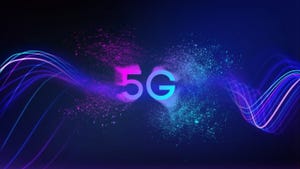HSPA no threat to WiMAX, says IntelHSPA no threat to WiMAX, says Intel
Despite the rollout of HSPA networks gathering pace around the world, with the top-end of the HSPA range (without MIMO) offering peak downlink rates of 14.4Mbps, it does not unduly concern Siavash Alamouti, CTO of Intel's Mobile Wireless Group.

Despite the rollout of HSPA networks gathering pace around the world, with the top-end of the HSPA range (without MIMO) offering peak downlink rates of 14.4Mbps, it does not unduly concern Siavash Alamouti, CTO of Intel’s Mobile Wireless Group.
“The peak data rates [the 3GPP camp] claim are exactly that,” he told telecoms.com. “Translate them to average capacity and you have significantly less capacity than you have with an OFDM system using MIMO. If HSPA had the same performance as WiMAX or LTE, we would not need these OFDM/MIMO technologies.”
According to figures supplied by market research firm Wireless Intelligence, there were 245 HSPA networks in commercial service worldwide as of mid-May 2009. Moreover, a further 113 HSPA networks are in the process of being deployed, trialled or planned. The majority of HSPA networks in commercial service still belong, however, to the lower-end of the throughput performance scale. Of today’s active HSPA networks, over 70 per cent of them are restricted to 3.6Mbps peak downlink rates – the bulk of the remainder offer 7.2Mbps peak.
But as mobile WiMAX Release 1.0 is capable of 40Mbps peak downlink data rates and peak uplink data rates of 10Mbps – HSPA (14Mbps version) has a peak uplink rate of 2Mbps, while HSUPA can reach 5.8Mbps on the uplink – Alamouti sees no meaningful competitive challenge to today’s mobile WiMAX networks in terms of real-life performance.
“HSPA comes from the cellular model, while WiMAX is about the consumer electronics and internet model,” adds Alamouti. “If you look at the protocol stack for WiMAX, you see Layer 1 and Layer 2 followed by IP on all the nodes. In 3GPP, you have elements of the legacy circuit-switched protocol stack, which were inserted as a compromise between telephony-driven and IP-friendly companies. HSPA is more for smartphone-like applications and will not be able to meet the demands of bandwidth-rich devices, such as PCs, MIDs and netbooks. These devices will put a lot of strain on HSPA networks.”
Aside from the higher peak rates and extra capacity WiMAX has, due to having what it claims as much better spectral efficiency than 3G, as well as wider channels – 10MHz as opposed to the 1.25MHz and5MHz channels used by 3G operators – 802.16e Release 1.0 also lays claim to a much superior RAN latency performance: 40ms compared with the 50-250ms for both HSPA and HSUPA, according to figures provided by Intel.
But the HSPA vendors, led by Ericsson, are not standing still. 3GPP Release 7 introduces HSPA Evolution (also called HSPA+), which supports MIMO and 64QAM in the downlink and 16QAM on the uplink. The current commercial HSPA+ top rate is 21Mbps, which Telstra in Australia has already commercially deployed. According to Ericsson, which has bagged the majority of HSPA contracts to date, HSPA+ networks capable of 28Mbps will become available this summer, shortly followed by 42Mbps. Further enhancements in 2010, says the Swedish supplier, will pave the way for peak rates of 84Mbps followed by 168Mbps.
Yet Alamouti still sees the cellular business model as falling well short of WiMAX in terms of matching the lower opex costs that an all-IP flat architecture (and an independent retail outlet strategy) brings. “3GPP networks have still got to support legacy protocols, and are generally more complex, which make it less internet friendly. Some good analogies are broadband ISDN versus DSL, or ATM versus ethernet, or HyperLan versus wifi.”
After the arrival of WiMAX Release 2.0 (802.16m), and on the assumption of 20MHz channels and 4×4 MIMO, Alamouti expects peak downlink speeds of between 300Mbps and 400Mbps, although the average capacity per sector would be, as Alamouti points out, around 25-30 percent of the peak data rates.
The 802.16m standardisation progress is targeted for completion by March 2010. “16m scales to the needs of the mobile internet in the 2012 timeframe. The number of users on the network will increase significantly and per user data rate expectations will increase by that time, so we need to make sure the access network has higher peak rates and sufficient capacity.”
Read more about:
DiscussionAbout the Author
You May Also Like










.png?width=300&auto=webp&quality=80&disable=upscale)


_1.jpg?width=300&auto=webp&quality=80&disable=upscale)